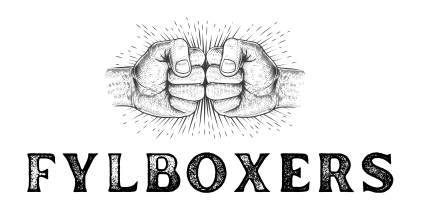Baseball is a sport that thrives on statistics and metrics, constantly evolving with new innovations that enhance gameplay strategy. One of the latest metrics gaining attention is MVR, or Minimum Viewing Requirement. But what exactly does MVR mean in baseball, and why is it becoming so crucial to the sport? This blog post will explore everything you need to know about MVR in baseball, offering insights for fans, sports enthusiasts, and coaches alike. Prepare to see how this metric is reshaping the way we understand and engage with the game.
Introduction to MVR in Baseball
Definition and Origin
MVR, short for Minimum Viewing Requirement, has emerged as an intriguing concept within baseball analytics. Initially rooted in the need to quantify visual engagement and game dynamics, MVR was designed to enhance viewer experience and provide metrics that can influence decision-making in real-time. Unlike traditional statistics focusing solely on player performance, MVR covers a broader scope, incorporating elements of fan engagement, timing, and gameplay fluidity.
Importance in Modern Baseball
In the realm of modern baseball, MVR has become an indispensable tool. With the sport continuously expanding its analytical horizons, MVR serves as a bridge between traditional metrics and contemporary audience-centric measurements. Baseball organizations increasingly view MVR data as a strategic asset, using it to optimize stadium experiences, broadcast presentations, and even in-game decisions. For fans and analysts, understanding MVR adds a new dimension to appreciating the sport’s complexity and depth.
Understanding the Technical Aspects of MVR
Breakdown of MVR in Different Baseball Scenarios
In baseball, the Minimum Viewing Requirement can manifest across various scenarios, affecting both players and viewers. For instance, MVR can influence the pace of play by determining optimal times for transitions between innings, or guide decisions on when to integrate commercial breaks during broadcasts. Additionally, MVR provides insights into fan behavior, helping teams manage in-stadium experiences and predict attendance patterns. By dissecting these scenarios, we gain a clearer understanding of how MVR operates within the sport’s fabric.
How MVR Impacts Decision Making on the Field
On the field, MVR plays a pivotal role in strategic decision-making. Coaches and managers can utilize MVR data to decide when to execute defensive shifts, substitute players, or call for bullpen changes. This metric offers a unique perspective by weighing the potential impact of these decisions against audience engagement and game flow. By leveraging MVR, teams can maintain competitive edges while ensuring the game remains captivating for spectators.
MVR and Its Role in Player Development
How MVR Metrics Influence Training and Strategy
MVR metrics extend beyond game day strategies and into player development frameworks. Trainers and coaches incorporate MVR data to refine training regimens, ensuring players are prepared for high-stakes moments that captivate audiences. By aligning training strategies with MVR insights, players develop skills that meet the evolving demands of modern baseball, from maintaining peak performance during pivotal plays to engaging with fans through mesmerizing athletics.
Case Studies on Players Who Excelled Due to Improved MVR
Consider players like Mike Trout and Mookie Betts, who excel not only in statistical performance but also in viewer engagement. By examining case studies of such players, we see how MVR contributes to their on-field success. Whether through timely hits, defensive highlights, or charismatic presence, players who understand and leverage MVR metrics stand out in both league rankings and fan devotion.
The Future of MVR in Baseball
Technological Advancements and MVR
The intersection of technology and baseball has led to rapid advancements in MVR applications. Emerging technologies such as AI and machine learning are enhancing the precision and scope of MVR data collection and analysis. Automated systems now track viewer engagement metrics in real-time, allowing teams to adjust strategies instantaneously and create dynamic fan experiences. This convergence of technology and sport promises to elevate MVR’s significance even further.
Predictions on MVR’s Role in the Evolution of Baseball Strategy
Looking ahead, we can expect MVR to play a fundamental role in the evolution of baseball strategy. With continuous improvements in data accuracy and accessibility, teams will increasingly rely on MVR insights to drive game-winning decisions. From optimizing lineup configurations to designing immersive fan experiences, MVR’s influence will permeate every aspect of the sport. For coaches and players, staying ahead in this MVR-driven landscape will be key to achieving sustained success.
Practical Applications for Coaches and Players
Incorporating MVR into Training Regimens
For coaches, integrating MVR into training regimens offers a competitive advantage. By analyzing MVR data, coaches can tailor practice sessions to simulate high-impact scenarios that align with viewer interest. This focus ensures players are ready to deliver memorable performances when it matters most. Additionally, training programs may include media training, helping players connect with fans and boost MVR metrics through engaging personal interactions.
Utilizing MVR to Enhance Performance and Decision Making on the Field
On the field, MVR empowers players to make informed decisions that enhance performance and captivate audiences. By understanding the intricacies of MVR, players can adjust tactics to optimize fan engagement, whether through strategic baserunning, clutch pitching, or electrifying plays. This strategic alignment with MVR not only benefits team outcomes but also enriches the overall baseball experience for spectators.
You May Also Like: Discovering Jann Mardenborough Wife and Their Shared Journey
Conclusion
Throughout this exploration, we’ve uncovered the multifaceted role of MVR in shaping modern baseball. From its technical applications to its impact on player development and strategic evolution, MVR serves as a vital metric that bridges the gap between performance and engagement. By harnessing the power of MVR, teams and players can elevate their game to new heights, captivating audiences and maximizing success.
As baseball continues to evolve, the importance of MVR cannot be overstated. Coaches, players, and fans alike are encouraged to immerse themselves in this dynamic metric, utilizing it to enhance understanding and appreciation of the sport. By integrating MVR insights into training, game strategy, and fan engagement efforts, the baseball community can collectively foster a more vibrant and captivating future for the game.
FAQs
What is MVR in baseball?
MVR, or Minimum Viewing Requirement, is a metric in baseball that focuses on quantifying visual engagement, game dynamics, and fan interaction, enhancing both strategy and viewer experience.
How does MVR impact player development?
MVR influences player development by aligning training regimens with audience-centric metrics, preparing athletes for key moments that maximize fan engagement and performance.
What are the future implications of MVR in baseball?
The future of MVR in baseball involves deeper integration with technology, allowing teams to refine strategies, improve fan experiences, and maintain competitive advantages.
How can coaches use MVR to improve team performance?
Coaches can utilize MVR data to tailor training sessions, simulate high-impact scenarios, and align game strategies with viewer interest, optimizing team performance and fan engagement.
What role does technology play in advancing MVR?
Technology enhances MVR by providing real-time data collection and analysis, enabling teams to make informed decisions and create dynamic, immersive fan experiences.







